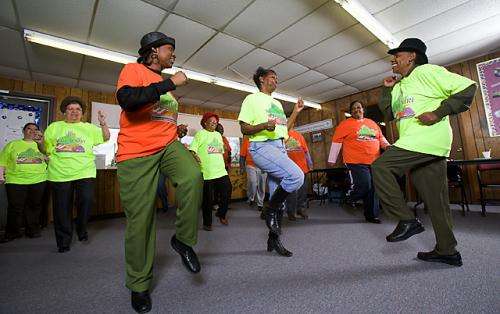Physical activity intervention for the elderly

Bone loss is not the only nemesis of the elderly. As the percentage of people aged 85 and older grows, the stakes are high for healthy individuals living independently who do not maintain their muscle mass and strength. Age-related muscle loss—which excludes disease-related muscle loss—is called "sarcopenia." This condition can lead to costly surgeries and hospital stays due to fractures after falls that occurred from weak muscles, says physiologist Roger Fielding.
In 2012 alone, 2.4 million nonfatal falls among older adults were treated in emergency departments, according to the Centers for Disease Control and Prevention's (CDC) National Center for Injury Prevention and Control. In addition, death rates from falls among older people have risen sharply during the past decade, CDC reports.
Fielding is with the Jean Mayer USDA Human Nutrition Research Center on Aging (HNRCA) at Tufts University in Boston, Massachusetts. He is director of the center's Nutrition, Exercise, Physiology, and Sarcopenia Laboratory. The HNRCA is funded in part by the USDA Agricultural Research Service.
HNRCA and international scientists have now arrived at a consensus on sarcopenia's clinical definition. The team developed simple tests to help local healthcare practitioners make diagnoses and treatment plans. The tests include assessing whether a person can walk 13 feet in 4 seconds or less.
"The gait speed cut point we found is 1 meter—or 3.25 feet—per second," says Fielding. "Below that, the risk of mortality and institutionalization increases dramatically." Fielding wants clinicians to think of these tests as an important vital sign for elders, similar in importance to blood pressure readings.
By age 80, an estimated 40 percent of the muscle mass that was present at age 20 is lost, HNRCA researchers say. But a subpopulation of older adults has muscle loss that is even greater than that of others in their age group. This extreme muscle loss has been associated with physical performance limitations and disability.
A study headed by HNRCA's geriatrician Christine Liu and coauthored by Fielding and others looked at data collected on a group of 177 elders aged 70 to 89 years who were functionally limited and at risk of becoming disabled due to lack of mobility. The data was collected during the "Lifestyle Interventions and Independence for Elders" study. The volunteers' body composition, including lean muscle and body fat, was measured both before and after the intervention.
One group of volunteers participated in a physical activity intervention that included aerobic, strength, balance, and flexibility training. The results demonstrated that elders with sarcopenia are capable of improving their overall physical function, including balance, walking, and strength, in response to physical activity.
"Sarcopenia should not deter clinicians from encouraging physical activity in older clients," says Liu. "Even with relatively little muscle mass, these individuals benefited from preventive exercise."

















